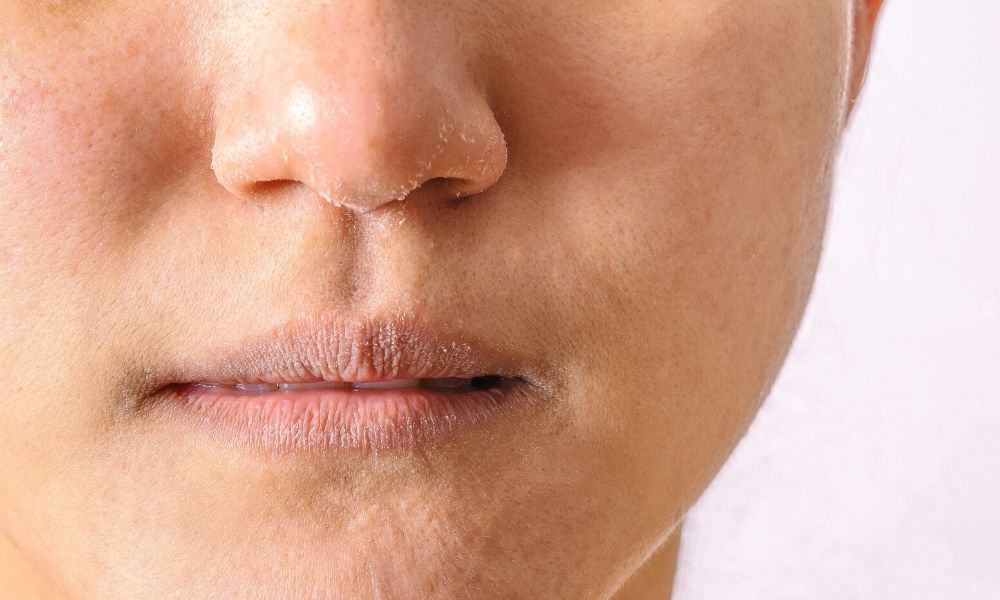Breathe Easy, Little One: Soothing Dry Nasal Passages in Children
Welcome, caring parents! Dry nasal passages can be as uncomfortable for our kiddos as they are for us. But, fear not! You’re about to embark on a journey that will not only educate you about the causes and implications of dry nasal passages in children but will also arm you with practical and doctor-approved remedies to keep those tiny nostrils hydrated and happy.
Understanding Dry Nasal Passages in Kids
Dry nasal passages in children can be a minor annoyance, but sometimes, they are indicative of underlying health issues. Before we dive into remedies and prevention, let’s understand the why’s and what’s of this common condition. Dryness can result from environmental factors, such as heated indoor air during winter or air conditioning in summer, to health-related issues like seasonal allergies or colds.
The Role of Humidity and Hydration
One often-overlooked factor is the level of humidity in your home. The optimal humidity level for comfort and health is between 30% and 50%. When the air is too dry, it can cause the delicate lining of your child’s nose to become parched, leading to discomfort, and sometimes even nosebleeds or increased susceptibility to infections.
Symptoms to Watch For
Knowing the symptoms of dry nasal passages in children can assist in early detection and treatment. These symptoms include frequent nosebleeds, a persistent stuffy nose, and a general sense of nasal dryness that can lead to scratching or picking. Children might also complain of a sore or itchy nose, or you may notice them breathing through their mouth more often.
Moisturizing Strategies for Dry Noses
Now, let’s talk solutions! Here are some tried and tested strategies that can help alleviate and prevent dry nasal passages:
- Humidify Your Home: Using a humidifier can add much-needed moisture to the air, particularly during dry months. Remember to clean it regularly to prevent the growth of mold and bacteria.
- Saline Nasal Sprays: Saline sprays are a gentle and effective way to moisturize your child’s nasal cavity. They can be used several times a day and are safe for all ages.
- Hydration: Encourage your child to drink plenty of fluids. Keeping the body hydrated helps maintain the moisture in the nasal passages from the inside out.
When Home Remedies Aren’t Enough
If you’ve tried the above methods and your child is still experiencing discomfort or if the dryness is accompanied by other symptoms, it might be time to visit your pediatrician. They can rule out any other causes and provide additional treatments or recommendations.
Preventative Measures to Keep in Mind
As the saying goes, prevention is better than cure! Here are some proactive steps to help keep your child’s nasal passages moist:
- Avoid Allergens: If allergies are the culprit, make sure to minimize exposure to allergens. This could include dust mites, pet dander, or pollen.
- Proper Nose Blowing: Teach your child the correct way to blow their nose to prevent irritation. Gentle blowing with a soft tissue is key!
- Air Quality: Keep your home free of cigarette smoke and strong perfumes that could irritate the nasal passages.
We know you want the very best for your pint-sized breathers, and we’re here to help guide you through managing and preventing dry nasal passages in your children. Keep an eye on those little noses, and with these tips, hopefully, they’ll be back to “smelling the roses” in no time!

Five Things Parents Should Know About Preparing for Dry Nasal Passages in Children
1. Understand the Indoor Climate
The air inside your home could be a major factor contributing to dry nasal passages. Low humidity levels, especially during winter months when heaters are used, can decrease moisture in the air and lead to dryness. Invest in a quality hygrometer to monitor humidity levels and ensure they remain within a comfortable range for your little ones.
2. Know Your Child’s Triggers
Children are often prone to dry nasal passages due to various triggers such as allergens, pollutants, and even certain medications. Identifying these triggers can be a game-changer in managing and preventing the issue. Make note of when your child’s symptoms worsen — it could be during a change in seasons, around pets, or after a dusty day at the park — and try to minimize exposure to these irritants.
3. Embrace the Power of Saline
Saline solutions are a parent’s best friend when it comes to dry nasal passages. The gentle soothing properties of saline can provide immediate relief for your child. It’s a fantastic idea to have saline nasal sprays or drops at home and in your bag for on-the-go relief. They’re safe, non-medicated, and can be used as needed to keep those little noses moist.
4. Encourage Good Hydration Habits
One of the simplest yet most effective ways to prevent dry nasal passages is by ensuring proper hydration. Teach your child the importance of drinking water throughout the day. Pack a fun, reusable water bottle for school and outings, and offer soups and fruits high in water content to keep them interested in staying hydrated.
5. Be Proactive with Health Care
Regular check-ups with a pediatrician can help you stay on top of your child’s overall health, including the state of their nasal passages. If you live in a particularly dry area or your child has had issues with dryness in the past, talk to your pediatrician about proactive measures you can take, such as using nasal gels or having a proper allergy management plan in place.
A Healthy Home Environment
Creating a living space that is both warm and welcoming, as well as optimized for health, can significantly reduce the occurrence of dry nasal passages. Consider adding indoor plants that naturally increase humidity levels, and keep your home well-ventilated to reduce the accumulation of airborne irritants. Coupled with regular dusting and cleaning to eliminate potential allergens, these steps can make a vast difference in the air quality of your home.
Nutrition and Its Role in Nasal Health
A well-balanced diet rich in vitamins and minerals contributes to overall health, including the moisture levels in mucous membranes. Foods that are rich in omega-3 fatty acids, such as fish, flaxseed, and walnuts, can support the health of your child’s nasal tissues. Also, fruits and vegetables high in vitamin C and E are great for boosting the immune system, helping in the fight against infections that might exacerbate dryness issues.
Remember that while dry nasal passages can be a nuisance, they’re typically a manageable condition. Stay in tune with your child’s needs, maintain a healthy environment, and keep communication open with your healthcare provider. Your attention to these details can ensure your child’s comfort and well-being, allowing them to breathe easily and focus on the joys of childhood.
See more great Things to Do with Kids in New Zealand here. For more information see here
Disclaimer
The articles available via our website provide general information only and we strongly urge readers to exercise caution and conduct their own thorough research and fact-checking. The information presented should not be taken as absolute truth, and, to the maximum extent permitted by law, we will not be held liable for any inaccuracies or errors in the content. It is essential for individuals to independently verify and validate the information before making any decisions or taking any actions based on the articles.




